Scrolling shooter on mobile can earn money. Alexander Enin, head of IT Territory, is sure of this (Mail.Ru Group). With App2Top.ru he shared the story of the development of the mockup Hawk: Freedom Squadron.
A joke about airplanes was released in the world in January 2017. The game has not yet occupied high places in the charts. The project is included in the Top 250 gaming cash registers in Western markets, and in the Top 100 in Russia. However, since its release, its positions in the box office tops of the App Store and Google Play have been steadily growing. According to DataMagic, the monthly earnings of the project are about $900 thousand [the material was published in October 2017, but we updated the figures in October 2018].
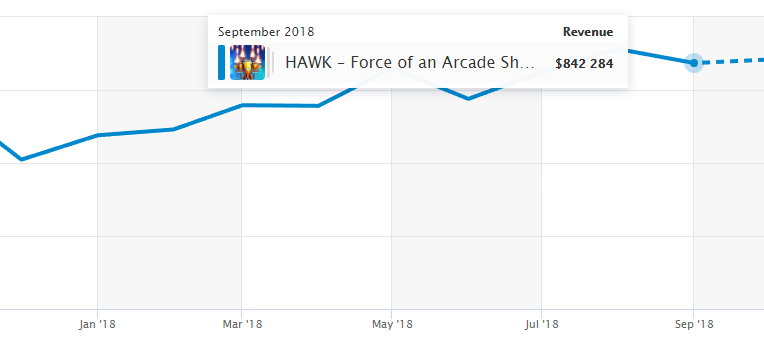
Alexander Semenov, Senior Editor App2Top.ru : How did the history of the project begin?

Alexander Enin
Alexander Enin, head of IT-Territory: The story began at the time of the closure of the experimental project Color Frenzy (“Magic of colors”), which was made by our young team from Voronezh. On the softlonch, it became clear that the project was “falling short” and it was closed, so the guys took care of finding an idea for a new project.
At the same time, I started pre-production of “Evolution 2” and very carefully watched modern Chinese hits. That’s when the Tencent – WeFly shutemap came into view. It was a popular and box-office project that convinced me that the genre of shutemaps has great potential, but you need to be able to submit it correctly. Since WeFly was successful only in China, and its European version of Thunder Raid could not boast of any success, it was clear that much more serious work was required for the genre to enter Europe than the one done at Tencent.
In parallel, I was doing Juggernaut Wars, which had a similar task. Thanks to working on the project, I have accumulated a lot of expertise. So there was an understanding of how to solve this problem in a shutemap.
I started looking for a team that could make a high-quality mock-up action. As a result, as you may have guessed, the creators of Color Frenzy and I found each other. United by the idea of making the first mass shutemap for the European market, we began to make Hawk: Freedom Squadron.
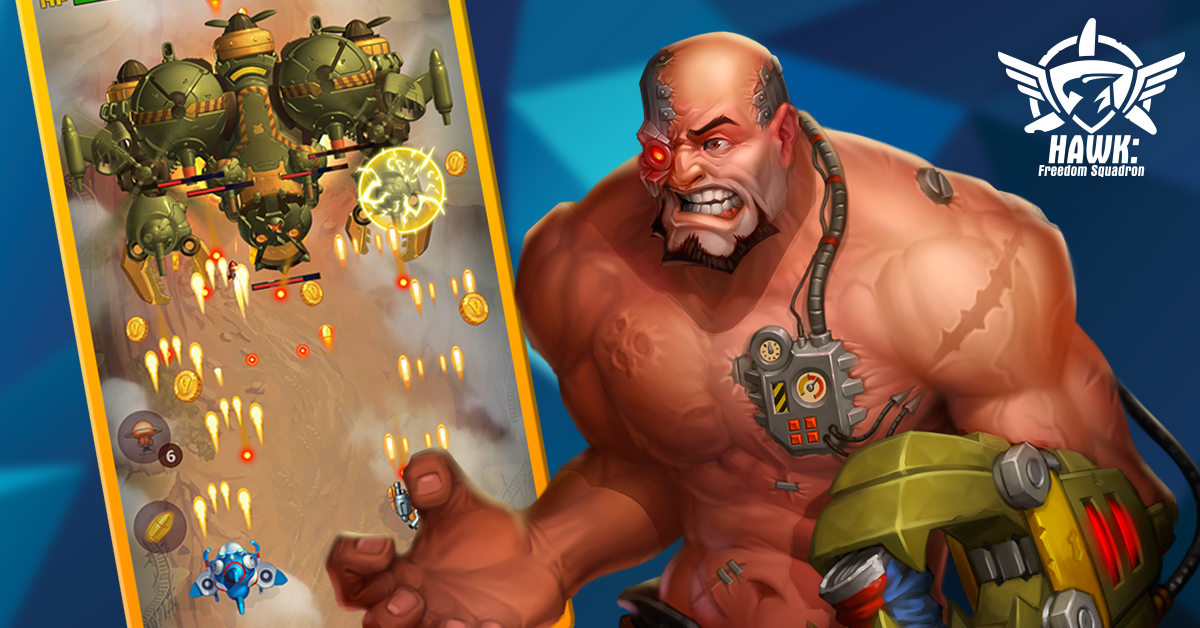
And what did market research say before starting development?
Enin: All we have seen is the absence of a clearly designed niche of shutemaps with a large number of games constantly being created in this genre. On the one hand, this indicates the demand for this type of gameplay on the market. On the other hand, the lack of truly massive hits means that no one has yet correctly met the expectations of the audience. This strengthened us even more in the need to do this project.
You yourself have just noted that there are no box office hits among the shutemaps. Then how did you manage to persuade the management to take up such a title? What did you appeal to in addition to the theses already mentioned?
Enin: In short, the minus in the form of a lack of box office hits, we turned into a plus. We said that we would be the first to be able to create a niche of shutemaps and earn a lot of money due to this.
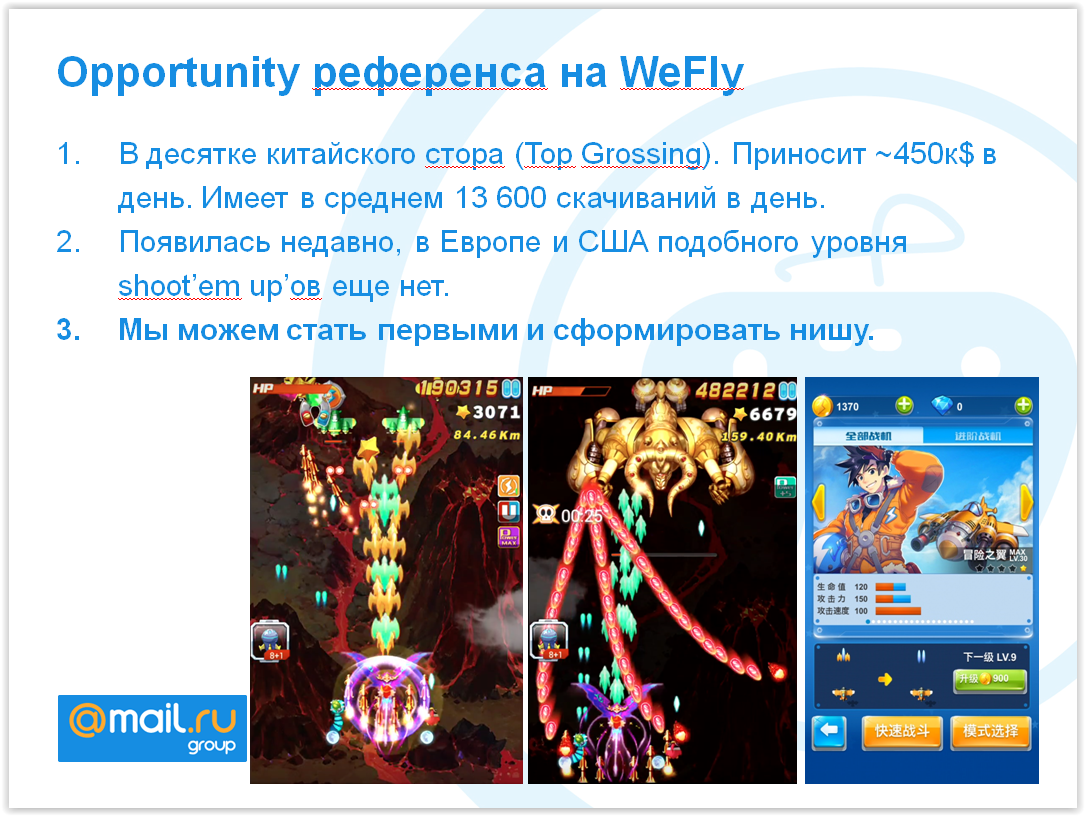
Slide from the presentation on the protection of the project before the management
But here you need to understand that the protection of projects from the management is a very delicate thing. It largely depends on the moment of time when this happens and especially on who protects the project.
If a person for whom this project is the first begins to talk about creating niches, then there will be little faith in it, since to talk about creating new niches, fundamental knowledge is needed at least about existing ones. And not at the level of “I know that there are such niches”, but at the causal level, when you understand the logic of what is happening. This requires a certain background: how the niche was formed over time, what prerequisites there were, what products moved it, what global factors influenced it, and so on. If you have an experience behind you that speaks of such ownership of the issue, then yes, you can come to the defense of the pitch and say: “The fact that there is no money in shutemaps means only that others have worked poorly with this genre before us, but we can turn the situation around.”
What USPS were positioned for the project at the time of the start of development?
Enin: It so happened that Evolution 2 helped with the search for USP again, or rather its producer, who went to the Tokyo Game Show and returned from there with a trend that spoke of signs of dominance of cooperative mechanics over classic PvP in a number of established genres.
We liked the idea of making a shutemap with an emphasis on the cooperative right away. Therefore, we changed the design of the game and introduced an additional game loop, later called bro-loop. He entered cooperative activity into the economic model of the game and thus, in the eyes of the player, fulfilled this USP by 100%.
Later, our PR specialists came up with an excellent positioning of the project with such a USP and we received a project in a genre familiar to everyone, but with a fresh idea and a clear promotion plan.
The development of USP for HAWK is one of my favorite cases for me, which demonstrates an example of a successful choice and correct implementation of USP in an established genre.

Can you tell us how the work on the project was built?
Enin: All the products I develop are projects built on expertise. There are always specific people at the top level, and processes and technologies are already going on below. Therefore, in order to increase the penetration of expertise into the project, I build the entire development primarily for people with expertise. I don’t use ready-made systems, I create them for each project individually.
In the case of HAWK, I used the money-approved expertise of the Moscow Juggernaut Wars team and added the genre expertise of the Voronezh team’s shutemap to it. Thus, the team from the capital assumed responsibility in the following areas:
- Meta Gameplay;
- monetization;
- UX/UI;
- marketing;
- product analytics;
- producing.
Voronezh , in turn, took responsibility for:
- Core Gameplay;
- level design;
- game entities and mechanics
- content and art
- engine and technology
- management
Management also got to Voronezh, as that part of the team includes the strongest specialist Sergey Khatenkov with experience in managing the resource giant Allods Online.
These two teams work synchronously on the product. Each of them has the right to make independent decisions in their own direction. At the same time, the coordinating function is placed on the “drivers”. These are ordinary developers who have additional responsibility for the final result of the implementation of a particular feature. These people are the keepers of the feature and lobby for its development at all levels of the competencies existing in the project. This approach allows you to create a live development and distribute knowledge about the project to the entire team.
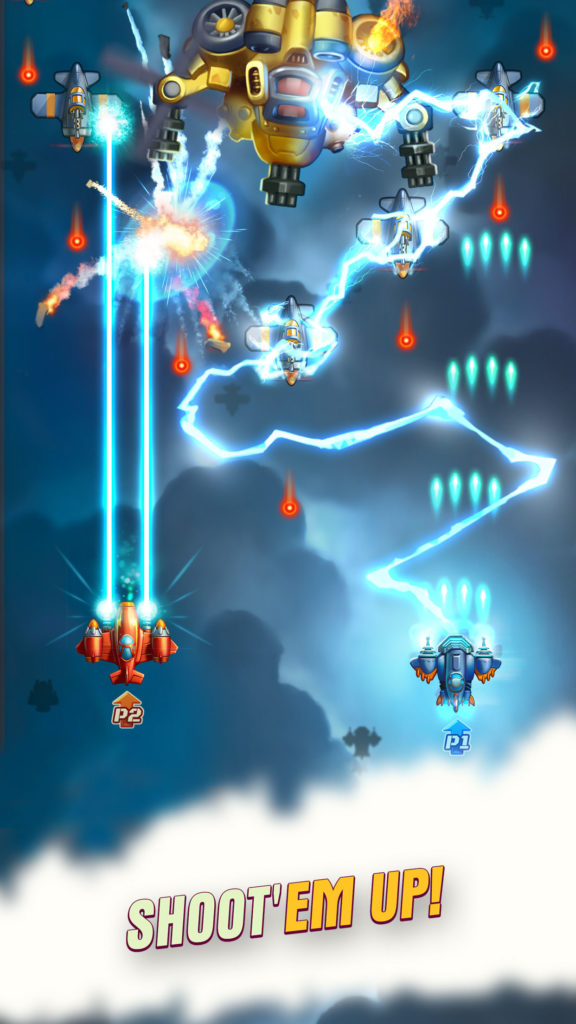
You started with a prototype. How quickly was it ready and how was the decision made on its basis, to do next or to close?
Enin: As I said at the very beginning, I had only a part of the expertise to start the project. I had all the knowledge except genre expertise and I was looking for it. I spent some time objectifying what a shutemap is and what knowledge is behind its high-quality implementation. I realized that this genre has a very serious depth, that the concept of rhythm and the feeling of flow work here in their own way, there are new tags for me: “drawing”, “side vision” and the same bullet hell. These game aspects cannot be measured and mathematically evaluated, they can only be felt. This carries a very big risk, which I have consistently and consciously removed.
- At first, I made sure that there are fans of the genre in the team that will make the shutemap.
- Then he asked them to make a prototype as quickly as possible with a level that, in their opinion, reflected the vision of the “true-shutemap”.
- When the prototype was made literally in a week, I realized that the team understands the genre and has the technology to implement it.
- After that, we started showing the prototype to different people and watching their reactions, including the bosses.
- And already at the beginning of production, when the first batch of final content appeared, we conducted a series of tests for “stickiness”. Thus, we removed the risk that during the pre-production the team did not lose the necessary sensations from the flight, accumulated on the prototype.
Did the team grow a lot when the project was given a full green light?
Enin: If it has grown, it is quite insignificant. This project positioned itself as an experimental one, and low financial expectations are applied to such projects, but they are also very limited in resources. Therefore, we started and finished doing the project with almost one composition.
How much time has passed from the moment of approval of the prototype to the softlonch?
Enin: Eleven months. And exactly a year has passed from the pitch of the project to the first money.

How long was the sotflonch, what did it turn out during it? What required surgical intervention?
Enin: Our current development school is pushing the idea of early tests very aggressively. We start actively testing the game as soon as there is something to test, so projects get to softlanch already in a high degree of readiness and we mainly debug our marketing machine on them.
The question is a bit general, but I think many people will be interested to know: what in any case can not be done with a softphone?
Enin: Wishful thinking. Softlonch, like any other milestone, is a point for making a decision on the feasibility of further development. You need to be able to make a decision to close the project even if it has reached the softlonch.
If the project does not show positive dynamics, then in no case can you convince yourself that a global release will change something. Of course, there are examples when projects are fired after a softlatch, but this is rather about the story when a clearly raw and unfinished project comes out on the softlatch, and therefore no metrics can objectively tell about the potential of the project.
Monetization of a project without PvP, in which a lot is built on the skill of the player, is a very difficult task. What should be the focus in monetization of such projects?
Enin: Monetization of such a project is our know-how. We managed to monetize this genre and achieve a high LTV even without using video ads and taking into account the k-factor. We managed to do this thanks to the knowledge gained in Juggernaut Wars, which is developing in a very competitive niche, where it is very difficult and expensive to attract a user, so we learned how to work correctly with progressions and mechanics that have a key impact on LTV. And in HAWK we laid the core of this knowledge by implementing horizontal and vertical scalability of monetization. This approach to monetization allows you to monetize content not by one-time bursts of income, but by increasing the cumulative ARPU, which in turn allows you to increase the advertising campaign and claim higher CPI.
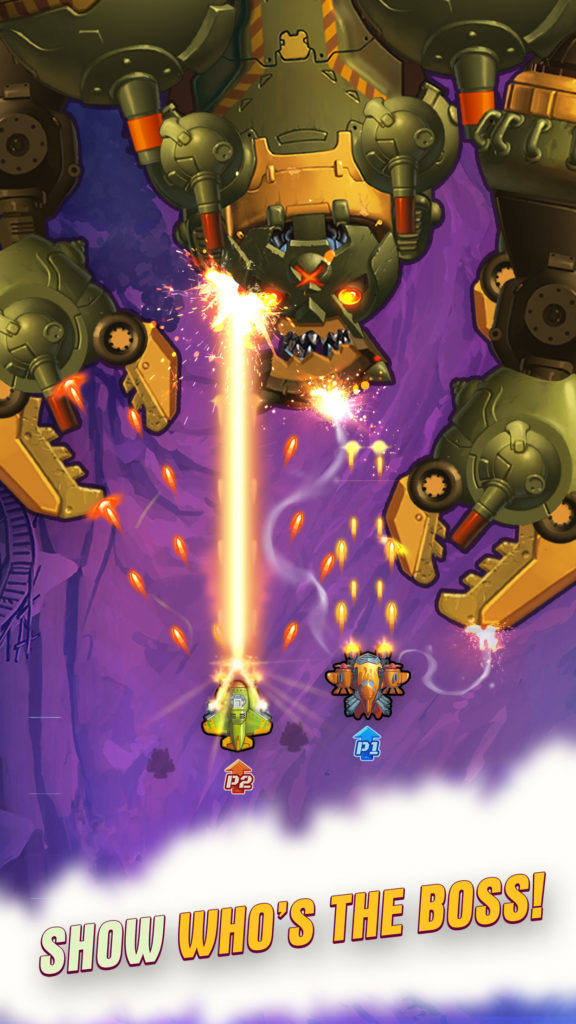
At the end of September [2017], you announced that the total number of downloads was 5 million. How long did you go to this figure?
Enin: We started actively promoting the project in the summer, reached one million registrations per month. We could have continued to increase volumes, but decided not to rush.
What are the main channels used for promotion?
Enin: We experimented with most of the channels. There is YouTube and even a TV, but Facebook remains the main channel for now.
You have noted that most of the users are from the USA. Did it come as a surprise to you?
Enin: No, it wasn’t a surprise, because it was one of the main business objectives of the project. We initially made a shutemap, which should be popular in Europe and the USA. All the solutions in the project, especially those related to progressions, medium-term goals and, of course, the setting, we tested for compliance with the expectations of the European audience. So this is a natural result for us.
Can you share the retention of the project now [important: the material was published in October 2017, the figures are relevant at that time]?
Enin: Weighted average hospital retentions: 45/20/12, that is, very good. There is only one game in our portfolio that has the best metrics.
Good luck and thanks for the interview!
Also on the topic:
